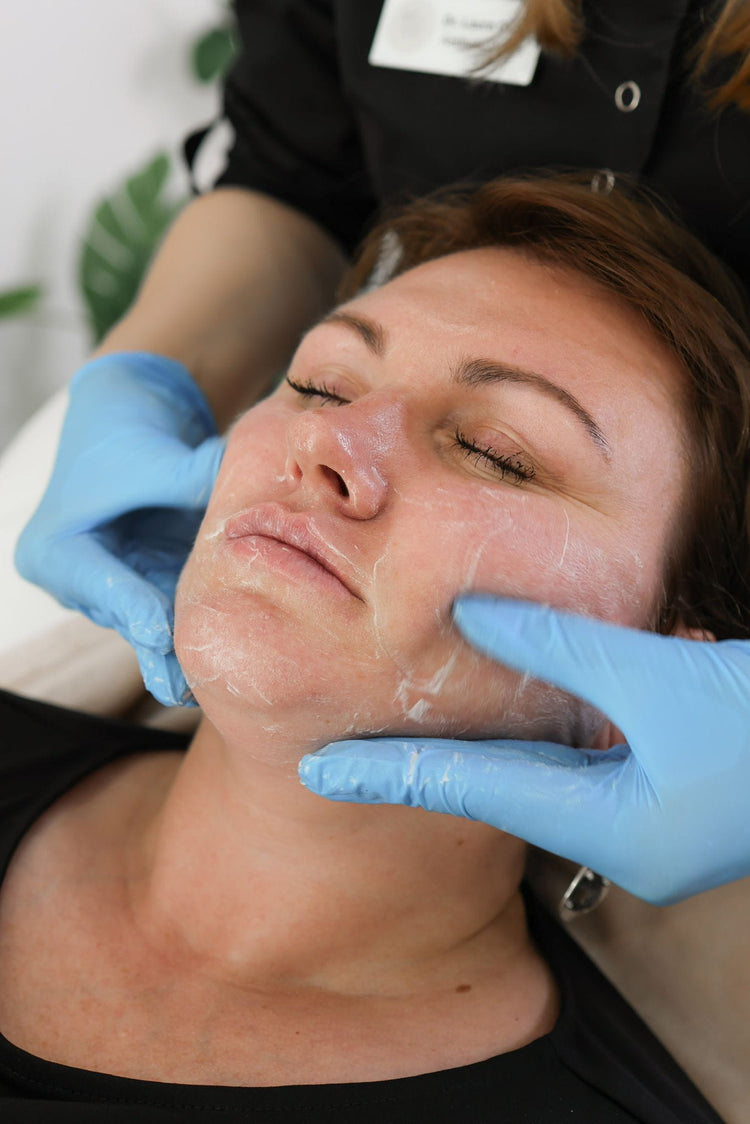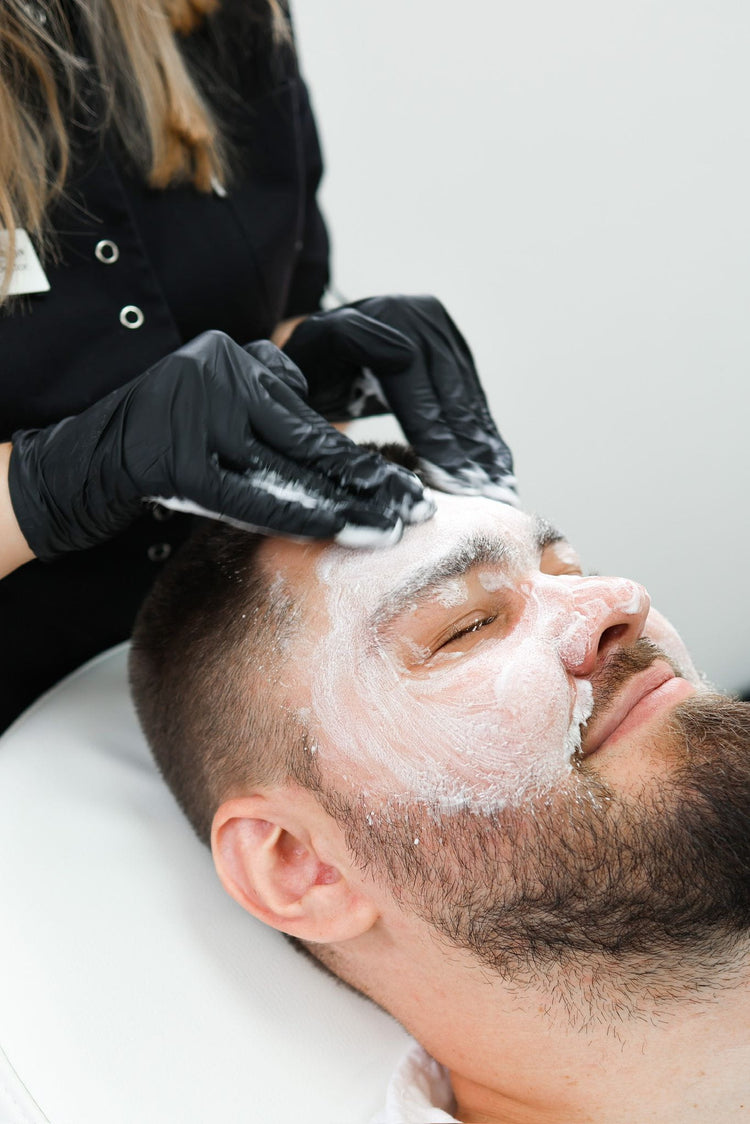Understanding Sun Damage

The sun, while essential for life, emits harmful ultraviolet (UV) radiation that can wreak havoc on our skin. Over time, repeated exposure to UV rays can lead to a range of issues, from premature aging and wrinkles to more serious concerns like skin cancer. Understanding the damaging effects of the sun is crucial for taking proactive steps to protect and repair your skin.
Types of Sun Damage
There are two primary types of UV radiation that damage skin: UVA and UVB rays. UVA rays penetrate deeply into the skin, causing wrinkles, sagging, and contributing to skin cancer development. UVB rays primarily affect the epidermis (the outermost layer of skin), leading to sunburn and also playing a role in skin cancer.
Sun damage manifests in various ways. Common signs include age spots, freckles, leather-like texture, dryness, and loss of elasticity. If you notice any of these changes or have concerns about sun damage, seeking advice from a dermatologist is essential.
Signs and Symptoms of Sun Damage

Skincare consultations can be immensely helpful in addressing the visible and hidden effects of sun damage. A dermatologist, with their expertise in skin health, can accurately assess the extent of the damage and recommend a personalized treatment plan.
During a consultation, a dermatologist will examine your skin, considering factors like age spots, wrinkles, dryness, and skin texture. They may also ask about your sun exposure history and skincare routine. Based on their evaluation, they can suggest a combination of treatments to address your specific concerns.
Treatment options might include chemical peels, laser therapy, microneedling, or topical creams with antioxidants and SPF. A dermatologist will guide you through the process, explaining the benefits and potential risks associated with each treatment option.
Skincare Consultation Process
Skin damage from the sun can be a frustrating and concerning issue, leading to visible signs like age spots, wrinkles, and a loss of elasticity. Understanding the extent of the damage and how to repair it can feel overwhelming. This is where skincare consultations become invaluable.
Assessment and Evaluation
Skincare consultations provide a personalized roadmap for repairing sun damage. During the consultation, a dermatologist will meticulously assess your skin’s condition, taking into account factors like age spots, wrinkles, dryness, and overall texture.
They will also inquire about your sun exposure history and current skincare regimen to gain a comprehensive understanding of your individual needs.
This in-depth evaluation allows the dermatologist to develop a tailored treatment plan that addresses your specific concerns.
Personalized Treatment Plan
Skincare consultations offer a structured approach to addressing sun damage, providing personalized solutions for repairing and rejuvenating the skin. During the consultation, a dermatologist conducts a thorough examination of your skin, identifying visible signs like age spots, wrinkles, and uneven texture.
They also inquire about your sun exposure history and current skincare practices, gaining valuable insights into your individual needs. Based on this comprehensive assessment, the dermatologist develops a customized treatment plan that may involve a combination of therapies.
These treatments can range from chemical peels to laser therapy, microneedling, or topical applications of antioxidants and sunscreen. The dermatologist carefully explains each treatment option, outlining its benefits, potential risks, and expected outcomes, empowering you to make informed decisions about your skin’s health.
Product Recommendations
Skincare consultations offer a structured approach to addressing sun damage, providing personalized solutions for repairing and rejuvenating the skin. During the consultation, a dermatologist conducts a thorough examination of your skin, identifying visible signs like age spots, wrinkles, and uneven texture.
They also inquire about your sun exposure history and current skincare practices, gaining valuable insights into your individual needs. Based on this comprehensive assessment, the dermatologist develops a customized treatment plan that may involve a combination of therapies.
These treatments can range from chemical peels to laser therapy, microneedling, or topical applications of antioxidants and sunscreen. The dermatologist carefully explains each treatment option, outlining its benefits, potential risks, and expected outcomes, empowering you to make informed decisions about your skin’s health.
Treatment Options for Sun Damage Repair
The visible effects of sun damage can be concerning, with age spots, wrinkles, and a loss of elasticity becoming increasingly prominent. Understanding how to repair this damage and restore a youthful complexion can be overwhelming. Skincare consultations offer a personalized approach to addressing these concerns.
Chemical Peels
Chemical peels are a popular treatment option for sun damage repair. During a chemical peel, a solution is applied to the skin to remove the outermost layers. This exfoliation process helps to reduce the appearance of age spots, wrinkles, and uneven texture caused by sun exposure. There are different types of chemical peels, ranging from mild to deep, each targeting specific skin concerns.
A dermatologist will recommend the best type of peel for your individual needs based on the severity of your sun damage and your skin’s overall health. Chemical peels can improve skin tone, texture, and clarity, leaving you with a more youthful and radiant complexion.
Microneedling
Microneedling is another effective treatment option for sun damage repair. This minimally invasive procedure involves using fine needles to create controlled micro-injuries in the skin. These tiny punctures stimulate collagen and elastin production, leading to improved skin texture, reduced wrinkles, and a more even complexion.
Microneedling can also help to improve the absorption of skincare products applied topically. It is generally considered safe and well-tolerated with minimal downtime. A dermatologist will determine the appropriate needle depth and number of treatments needed based on your individual skin concerns.
Laser Therapy
Laser therapy is a powerful tool for addressing sun damage. Different types of lasers target specific skin concerns.
For age spots and pigmentation issues, intense pulsed light (IPL) therapy can effectively break down melanin, reducing the appearance of dark spots.
Fractional laser therapy, on the other hand, uses microscopic laser columns to penetrate the skin, stimulating collagen production and improving wrinkles, texture, and tone.
A dermatologist will recommend the most suitable laser treatment based on your individual needs and skin condition.
Topical Treatments
Topical treatments play a crucial role in protecting and repairing sun-damaged skin. Creams and serums containing antioxidants like vitamin C and E can help neutralize free radicals caused by UV exposure, protecting against further damage and promoting collagen production.
Retinoids, derived from vitamin A, are another important ingredient for sun damage repair. They accelerate cell turnover, reduce the appearance of wrinkles and age spots, and stimulate collagen synthesis.
Sunscreen is essential for preventing further sun damage. Applying a broad-spectrum sunscreen with an SPF of 30 or higher daily, even on cloudy days, is crucial to protect your skin from harmful UV rays.
Preventing Future Sun Damage
Protecting your skin from the sun’s harmful effects is crucial for maintaining its health and appearance. While enjoying the sun, it’s essential to take preventive measures to minimize sun damage. Understanding the different types of UV radiation and their effects on the skin allows for informed choices regarding sun protection strategies.
Sun Protection Strategies
Protecting your skin from the sun’s harmful effects is crucial for maintaining its health and appearance. While enjoying the sun, it’s essential to take preventive measures to minimize sun damage.
One of the most effective ways to prevent future sun damage is by diligently applying sunscreen daily. Choose a broad-spectrum sunscreen with an SPF of 30 or higher and apply liberally to all exposed skin, including your ears, neck, and the tops of your feet. Remember to reapply every two hours, especially after swimming or sweating.
In addition to sunscreen, seek shade during peak sun hours, typically between 10 a.m. and 4 p.m., when the sun’s rays are strongest. Wearing protective clothing, such as long-sleeved shirts, pants, and wide-brimmed hats, can also provide an extra layer of defense against UV radiation.
Another important preventative measure is to avoid tanning beds, as they emit harmful UVA and UVB rays that can significantly increase your risk of skin cancer. Remember, any tan is a sign of skin damage.
By adopting these sun protection strategies, you can significantly reduce your risk of sun damage and maintain healthy, radiant skin for years to come.
Lifestyle Modifications
Preventing future sun damage involves a combination of proactive steps that protect your skin from harmful UV rays.
Wearing protective clothing like long sleeves, pants, and wide-brimmed hats can create a barrier against the sun’s radiation.
Seek shade, especially during peak sun hours (10 a.m. to 4 p.m.), when the sun’s rays are most intense.
Daily use of broad-spectrum sunscreen with an SPF of 30 or higher is crucial for protecting your skin from both UVA and UVB rays. Remember to reapply every two hours, especially after swimming or sweating.
Finally, avoid tanning beds as they emit harmful UV radiation that increases your risk of skin cancer.
Importance of Regular Skin Checks
Preventing future sun damage is essential for maintaining healthy and youthful skin.
Wearing protective clothing, such as long-sleeved shirts, pants, and wide-brimmed hats, creates a physical barrier against the sun’s harmful rays.
Seeking shade during peak sun hours, typically between 10 a.m. and 4 p.m., minimizes exposure to intense UV radiation.
Daily application of broad-spectrum sunscreen with an SPF of 30 or higher is crucial for protecting against both UVA and UVB rays. Reapply every two hours, especially after swimming or sweating.
Avoiding tanning beds is also essential, as they emit harmful UV radiation that significantly increases the risk of skin cancer.
Regular skin checks are vital for early detection and treatment of any sun-related issues.
By examining your skin regularly, you can identify any suspicious moles, spots, or changes in existing lesions.
Familiarize yourself with the ABCDEs of melanoma:
- Asymmetry: One half of a mole does not match the other.
- Border: The edges of a mole are irregular or blurred.
- Color: A mole has multiple colors, such as brown, black, tan, red, or blue.
- Diameter: A mole is larger than 6 millimeters in diameter (about the size of a pencil eraser).
- Evolving: A mole changes in size, shape, color, or texture.
If you notice any changes or suspect a skin cancer issue, consult a dermatologist immediately for proper diagnosis and treatment. Early detection significantly improves the chances of successful treatment.
Book your acne scar treatment with Dr. Laura Geige at It’s Me & You Clinic
- Why Does My Lip Filler Always Migrate - November 10, 2025
- What Is The Danger Zone For Nasolabial Fillers? - November 7, 2025
- What Are The Best CBD Gummy Edibles For Pain Management - November 4, 2025
